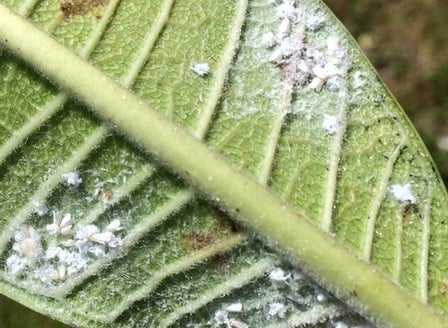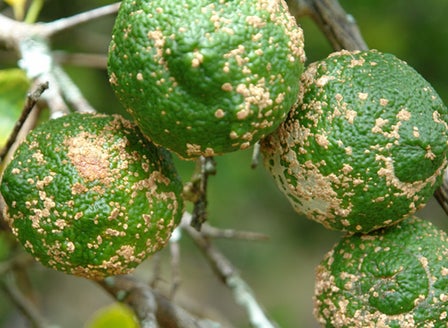Citrus trees are a valuable asset to any garden. As well as producing masses of fruit, they are also sought after for their attractive foliage and highly scented flowers. Suited to almost any garden style, citrus consistently prove their versatility.
Planting Calendar
Lemons, limes, mandarins and oranges are best planted from March right through until November.
Harvest In
2 - 3 Years
Citrus will be ready to harvest after 2 to 3 years from planting.
Prepare
Position
Citrus require a warm, sunny position with at least six hours of direct sunlight daily. Protect from cold, harsh winds. Make sure there is a good amount of airflow in the area.
Soil
When planted into the ground, citrus like a free draining soil that is rich in organic matter. To improve the organic content in your soil, break up the soil and add Kings Compost and Kings Sheep Pellets then mix together well. When growing in containers, plant into Kings Container mix. This mix contains added water storage crystals and Saturaid, two products that help maintain moisture in the soil.
Pollination
Citrus are self fertile so do not need a pollinator.
Plant
Gently tap the plant out of its pot. Dig a hole twice the depth and width of the plants root ball. Mix Kings Compost into your existing soil at a 50/50 ratio, add Sheep Pellets and Kings Citrus & Fruit Tree Fertiliser, then mix together. Back fill the hole with this soil, so that when planted the top of the plant’s roots sit level with the surrounding ground. Firm the soil down gently and water in well with Aquaticus Organic Garden Booster. In heavier clay soils, where drainage is likely to be an issue, plant onto a raised mound and sprinkle Gypsum Clay Breaker into the bottom of the hole, this helps slowly condition the soil and help to break down the clay.
Care
Watering
Watering is essential especially in the first year of planting to allow the roots to get well established. Water slowly allowing the water to sink down into the roots, rather than allowing it to run off the top of the soils surface. Add Saturaid into the soil at planting as this will help channel the water deep down into the root zone. Consider setting up an automatic watering system – these can be simple and inexpensive. For container plants, this will probably mean daily watering during summer, never allow the container to sit in water.
Feeding
Feed with Kings Citrus & Fruit Tree food in Spring and again every month through to the end of Autumn. Liquid feed every month with Aquaticus Garden Booster, from Spring through to the end of Autumn, this encourages root growth and increases the microbial activity in the soil. Monthly applications of Kings Sheep Pellets will help with soil conditioning and plant health. For plants growing in containers feed with Kings Slow Release Citrus Food and Aquaticus Garden Booster.
Protecting
Protect from Guava Moth throughout the year by placing Guava Moth Traps in the trees to monitor the number of moths present. Place the trap halfway up the tree. One trap will be sufficient for 3-5 trees. Remember to replace the Pheromone every 6 weeks for best results. If there are only small numbers present the trap should be sufficient to control the problem. If you catch more than 12 moths in a 2-week period, spray trees with Native Neem Organic Insecticide.
Mulching
Mulch around the base of the plants (make sure that the mulch does not come into direct contact with the stem of the plant) with Living Earth More than Mulch. Mulching helps to reduce weeds as well as aiding the soil to retain moisture.
Spraying
Citrus trees need regular spraying to keep pests and diseases at bay. Spray before and after flowering and up until harvest with GroSafe Free Flo Copper for Fruit and Vegies to keep Citrus Verrucosis under control. Repeat at 3-4 weekly intervals up until harvest. Regular spraying with BioNeem and Mavrik will keep other pest under control.
Pruning
With grafted citrus, remember to remove all shoots from below the graft as this growth is from the rootstock, you will be able to tell the difference in the foliage. All other pruning is for shape and should be done after fruiting but before October. If pruning large branches, seal the wound with a pruning paste to prevent borer infection.
General Care
When using sprays, chemicals or fertilisers always read the label and follow the instructions. Apply sprays in the evening to avoid harming beneficial insects.
Beginner Tip
Yellow leaves most often mean that young trees require Magnesium or other Trace Elements. Apply Yates Liquid Trace Element as per the instructions on the packet.
Expert Tip
Citrus are either grafted onto dwarf root stock (Flying Dragon). If not grafted they are either grown by seed or leaf cuttings. Grafted varieties are known to be more resilient to disease and grow faster and at maturity are smaller than other types only growing to 2-2.5m
Tip
We suggest removing all fruit in the first year to assist your young tree in establishing a good root and branch structure. Citrus are heavy croppers, often setting more fruit than they can sustain. Early removal of approximately 1/3 of the crop will result in improved fruit quality, and help to prevent biennial bearing (setting fruit only once every two years).
Frequently Asked Questions
Some of my citrus has sticky black stuff on the leaves, what is it?
This is sooty mould, it is a fungi that grows on honeydew which is excreted by sap sucking insects. Take a look under leaves and on new growth to find the insects that are leaving the honeydew behind, and treat these instead.
My citrus tree has crinkly leaves and bumps on its fruit, what should I do?
This is most likely citrus scab/verrucosis. Spray with Copper Oxychloride after petal fall, and at 3 to 4 weekly intervals until harvest to help with control and prevention.
The leaves on my trees curl inwards, what causes this?
Fluctuations in night and day temperatures can cause the leaves to curl.
There are small White flies all over my lemon, what is it and how do I stop it?
These little White flies are called White Fly and can quickly turn into large populations. They breed quickly and need spraying every 7 days to keep then under control. See comment in the treatment section of this guide.


